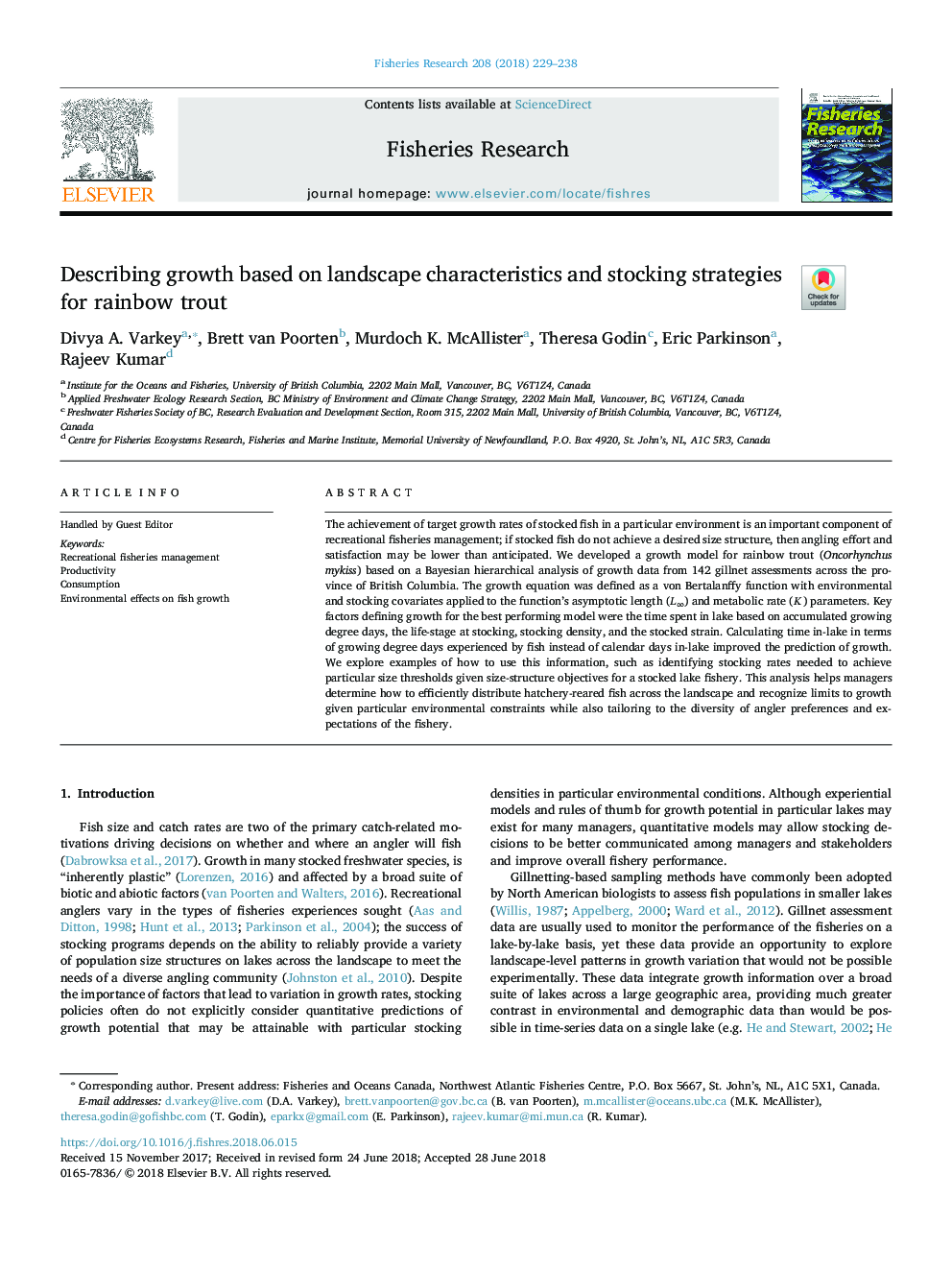| Article ID | Journal | Published Year | Pages | File Type |
|---|---|---|---|---|
| 11033193 | Fisheries Research | 2018 | 10 Pages |
Abstract
The achievement of target growth rates of stocked fish in a particular environment is an important component of recreational fisheries management; if stocked fish do not achieve a desired size structure, then angling effort and satisfaction may be lower than anticipated. We developed a growth model for rainbow trout (Oncorhynchus mykiss) based on a Bayesian hierarchical analysis of growth data from 142 gillnet assessments across the province of British Columbia. The growth equation was defined as a von Bertalanffy function with environmental and stocking covariates applied to the function's asymptotic length (Lâ) and metabolic rate (K) parameters. Key factors defining growth for the best performing model were the time spent in lake based on accumulated growing degree days, the life-stage at stocking, stocking density, and the stocked strain. Calculating time in-lake in terms of growing degree days experienced by fish instead of calendar days in-lake improved the prediction of growth. We explore examples of how to use this information, such as identifying stocking rates needed to achieve particular size thresholds given size-structure objectives for a stocked lake fishery. This analysis helps managers determine how to efficiently distribute hatchery-reared fish across the landscape and recognize limits to growth given particular environmental constraints while also tailoring to the diversity of angler preferences and expectations of the fishery.
Related Topics
Life Sciences
Agricultural and Biological Sciences
Aquatic Science
Authors
Divya A. Varkey, Brett van Poorten, Murdoch K. McAllister, Theresa Godin, Eric Parkinson, Rajeev Kumar,
